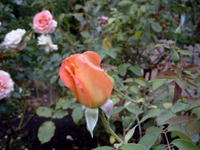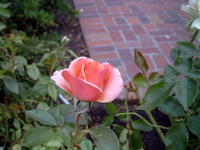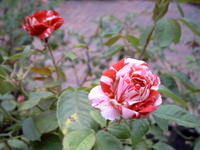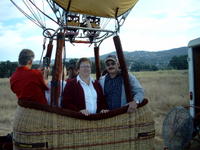 Osteospernum...pale yellow, with a dark ring around the center
Osteospernum...pale yellow, with a dark ring around the center

Moonbeam Coreopsis...tiny bursts of sunshine that keep returning to bring a smile to all who walk past.

Hollyhock from our farm in Missouri....old-fashioned beauty and simplicity.
By my downspout, these "johnny-jump-ups," or violas, seem to thrive in any location they choose to sprout.



Polka-dot centauras....dainty on their tall spindly stems, no longer existing in my flower garden, thanks to a rambunctious pup chasing a young skinny kitten.
My flower garden helps me escape, at least mentally throughout the summer. The planning and purchasing of new choices, and the moving of the ones that decide to return keep me busy through the early weeks of summer. As I watch my garden, I can't help but reflect on the past school year, and think to the year ahead. It dawns on me just how similar my gardening and my teaching really are. I start digging, all "gung-ho" at the beginning of the season, making careful plans and taking great pride in the imagined results. Then, much too late, I realize that one needed more water, another less sun, and still another probably could have benefited from some fertilizer. Oh well, I can rip them out and get more in my flower bed, but what about my students?
Can "one-size-fits-all" teaching work any better in the classroom? My goal in my garden is the beauty of the colors, shapes, textures and smells. I know what I want the end result to be, but I just assume the plants all need the same nurturing and nutrients to get there. Does that happen in the classroom too? Too often, do we know the end result, and plod away with the same techniques and information we always have, expecting the results of previous years? What if one student needs more nurturing, another needs space, and yet another needs you to shed a different kind of light on the subject to help her see?
If my goal is to see every student thrive to full potential, maybe I need to take a lesson from my garden. I learned this year with my flowers, that to maintain the plants' beauty, I need to learn as much as I can about each one, and not take the easy route of treating them all alike. My students should get the same type of individualized care and nurturing. Perhaps then, they too can all thrive.
























